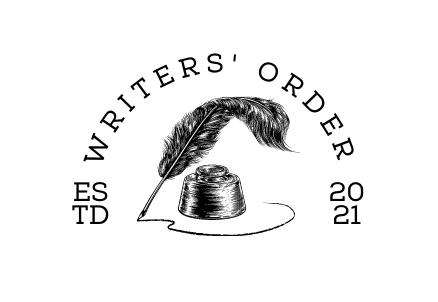You have to be the change to bring the change.

How to Write a Great Artwork Title
Our content is reader-supported. We may earn a commission if you make a purchase through one of our links.
Suppose there is a new, glossy painting in your studio. It is finally polished after standing on the easel, unfinished, for two weeks. You’re proud of the streaky texture, and the colors tend to evoke epiphanies in the viewer. It has the potential to market brilliantly, or it will make the perfect creative present to a friend. There is only one problem, though – the artwork title is missing.
This issue seems minor, like an after-thought, until you spend another week thinking of a name. Should you name artwork after its themes? Or should you roll with the feelings that emerged in your heart while creating it? You could take a hundred dimensions with the title, and the process can be undoubtedly frustrating (sometimes ending in a spoiled canvas and ripped-out hair). To save you the hassle, here are some pointers that will simplify the terrifying ordeal of naming your art.
The Artwork Title is More Than Just the Name
It’s a hard row to hoe, I know. But the title is more than the name of the painting; it contains further details about the artwork. For example, you may encounter a title in this format on paintings in an exhibition:
“Ruby Mikhael
Evolution of a flower
2016-2020
Oil on canvas, aluminum, wool
20 x 30 inches
$890.00″
It enlists the name of the artist, the timespan she took to create the work, the art medium used, dimensions of the canvas, besides the name of the art. Since the hypothetical painting in question is up for sale, the price is also included. You’ll find it familiar for artists to tweak the title based on the origins of the art or its purpose. For example, if an art gallery or museum lent the painting, the title may also say “Courtesy of Le Louvre.” Likewise, an amateur artist not interested in monetizing their work will omit the price while labeling the art.
Suppose the art in question is a gift or has complementary details. In that case, you may also include those, such as “Portrait of Harris Goldsmith, as a gift to Sherry Goldsmith in memory of her late father.” Yet other artworks carry references to the collector, too, apart from the artist. Besides, including the total time taken (either in hours or minutes) in durational audios or videos helps catalog it.
What Lies in the Name?
Coming to the name itself, why is “Untitled” not a good enough title? In some cases, it may be clever, such as if you work in abstract or you want to emphasize anonymity in figures or places. But generally, the audience and potential customers are looking for more. It could be your inspiration behind the art, a story about its creation, or anything that can distinguish your work in a room laden with art that satiates them.
Any element that you personally find unique in your painting can also make a memorable name. For demonstration, consider the Potato Eaters by Van Gogh. In this painting, he captures the mundane life of a country family. The subjects work in fields all day, and in the specific period, they come together to eat potatoes. Of all the objects Van Gogh could have named the art after, he picked the meal.

It effectively highlights the humility of the family’s life and the harshness of their living conditions. Likewise, the title of Edward Munch’s Scream, while depicting the inner turmoil of the alien-like figure, speaks to the anxieties and doubts of the audience. As an expressionistic painting, it brings out emotions like agony and chaos, which become relatable for the viewer. If not for the name, reaching the gist of the work would be way more challenging.
Writing about your artwork is a quick and easy way to get to a great art artwork title. When you play with words, it gets easier to find words and phrases that’d look good in the title.
How to Choose a Compelling Artwork Title
The inspiration for the name of your painting may come from the following:
The Color Palette
Take some moments to reflect on whether the brushstrokes on your canvas symbolize something. It is highly probable since we all naturally associate colors with deeper meanings. In a typical example, yellow means sunny, cheery, and lively, whereas blue can indicate gloom or serenity. However, you may have a different subjective approach towards each.
In the aftermath of the French Revolution, Rubenistes and Poussinistes were two groups that emerged based on differences of opinion about technique. To the latter, form and line were the best means for conveying the artist’s message. For Rubenistes, however, carefully picking and manipulating dabs of color could seamlessly connect the audience to the artists’ work. Thus, your perfect title may be hidden behind the thick layers of colored paint on the canvas. Portrait of a Man in Purple and The Silver in the Gray are both color-based titles and rich in symbolism. It all comes down to using color to enhance your writing here.
Emotional Approach
When in doubt, get back in tune with your emotions. Figure out how the painting makes you feel. You may have found yourself diving in someone’s emerald eyes with that perfect tinge of blue and felt the itch to fetch a paintbrush and paint them. It is not rare for artists to feel inexplicably attached to a muse. Besides, some artwork is the direct product of a 4 am mental breakdown on the kitchen table. Yet other times, you may find your creative juices flowing while bathing in the neon glow of the roadside lampposts while walking down a lonely street.
Either way, the overarching feeling you associate with the painting can make a very relevant title. It will also ensure that the work becomes the hallmark of your originality, carrying the first essence no matter where it ends up. For instance, The Big Gloom, Existential Crisis on Public Transport, and Peace in Angst can make compelling names.
Subject
It may seem childish to name your work The Green House or The Road, but it is an old, tried-and-tested tradition to call your art after a specific subject. The Starry Night by Van Gogh, Waterlillies by Monet, and the Coronation of Napolean by David fit right into this category. If it is a historical or a descriptive painting, you can easily name it after the event.
Lastly, adding further details or combining different aspects of a painting will definitely solve the issues for you. For example, titles like Orange Blanket on the Clothing Rail or The City Under a Crumbling Sky, or Life in an Hour Glass immediately promise depth and stories.
Final Thoughts
Simple is better. The only thing I’d advise you to not do is making your artwork title lengthy or over-complicated. Short, simple words always tend to weigh heavier. That said, just like your art, writing a great title for your artworks is something completely in your control. It’s yet another creative journey that allows you to express yourself.
Writing about art will make it easier to come up with good artwork titles. When the words flow, it gets much easier to identify and pick up just the right set of words that would do wonderfully in the art’s title.




The next time I read a blog, I hope that it doesnt disappoint me as much as this one. I mean, I know it was my choice to read, but I actually thought youd have something interesting to say. All I hear is a bunch of whining about something that you could fix if you werent too busy looking for attention.